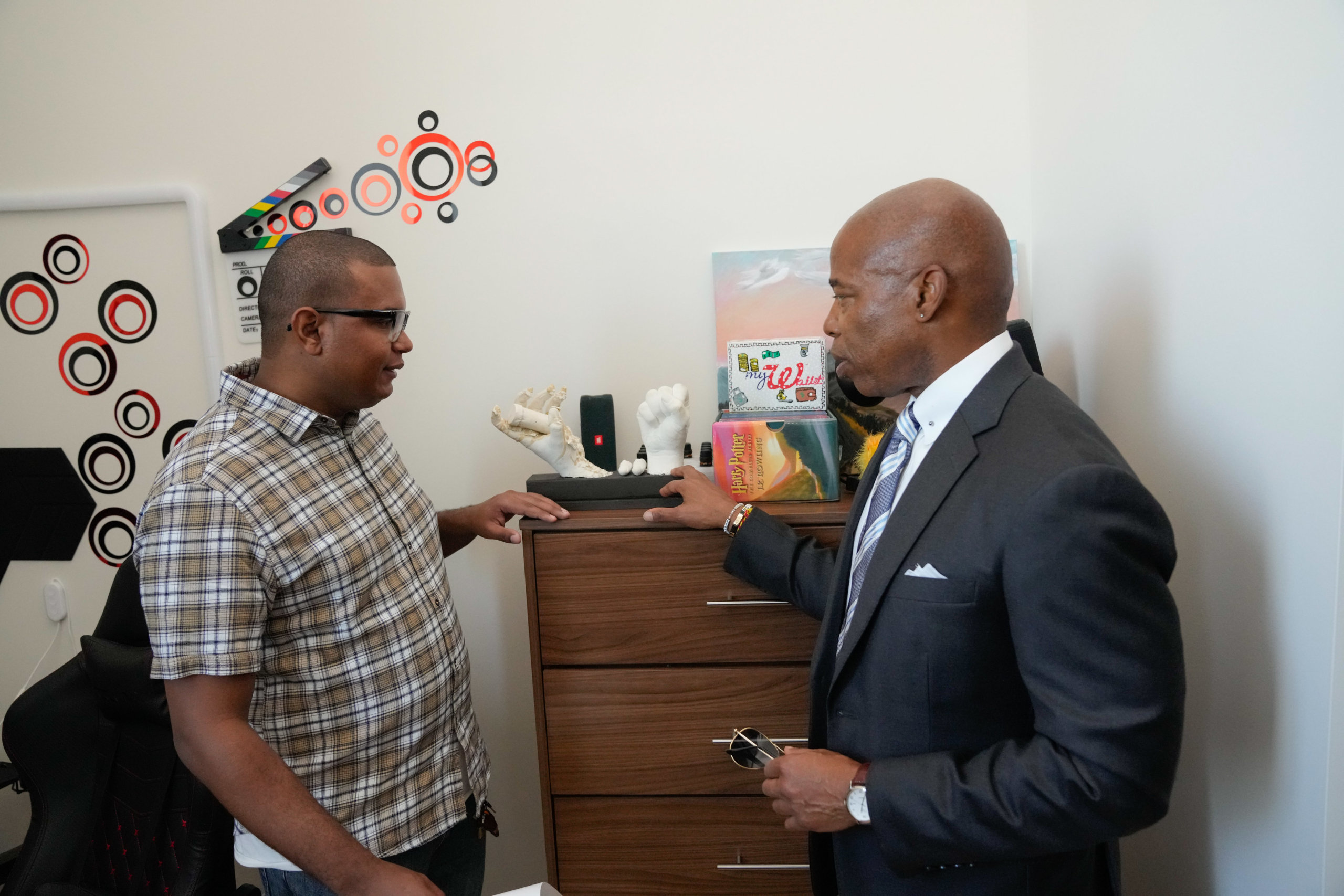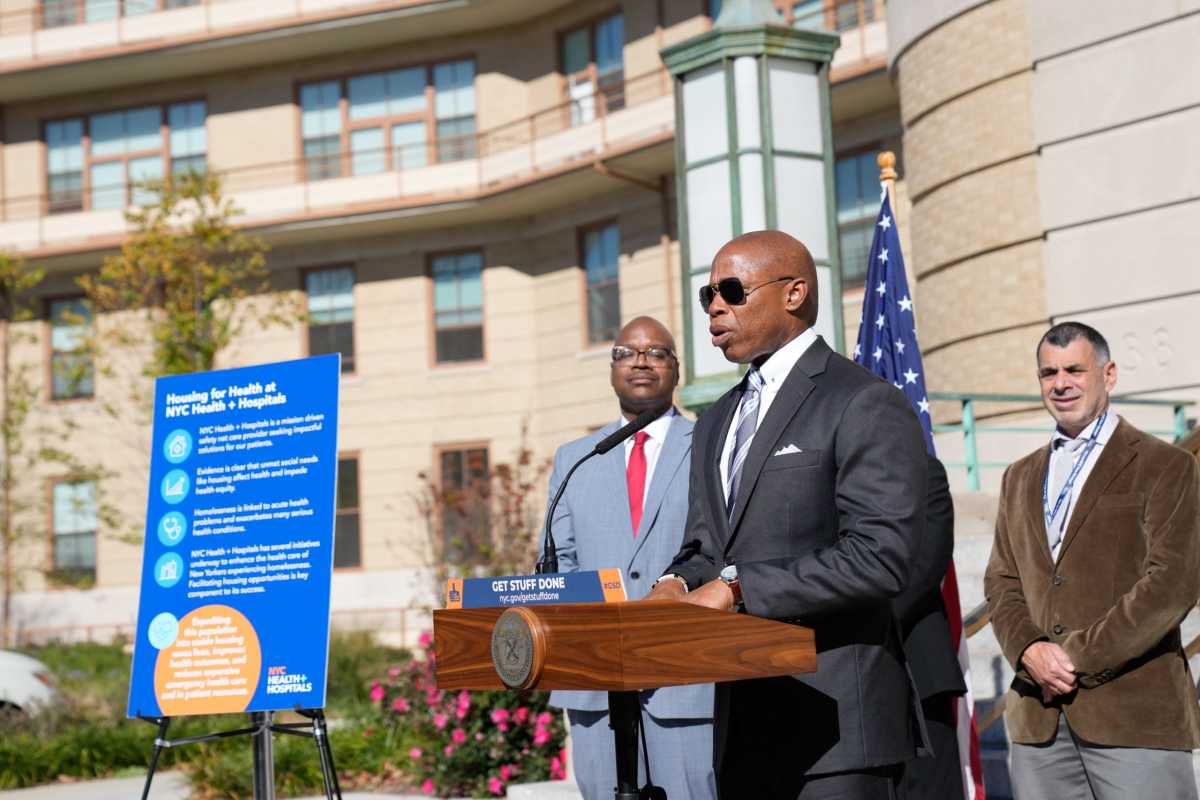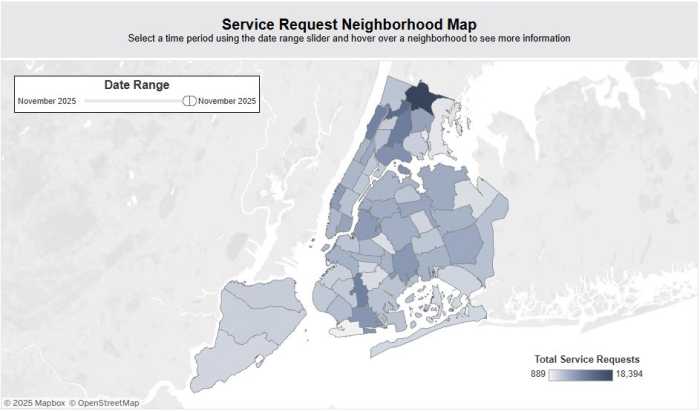Mayor Eric Adams launched a new initiative to connect patients experiencing homelessness to affordable homes with support services Thursday, Nov. 3, at the T Building in Jamaica, the morning after it was recognized as the downstate project of the year by the New York State Association for Affordable Affordable Housing (NYSAFAH).
Built in 1937, the former tuberculosis ward of Queens Hospital was converted by SLCE Architecture Group into 200 apartments, 75 of which are supportive housing for patients in the NYC Health + Hospitals system who experienced homelessness.

“It’s time to look at the full picture of New Yorkers’ health challenges, and to treat these challenges holistically,” Mayor Adams said. “It’s not enough to care for unhoused New Yorkers in the emergency room and then discharge them if they have no home to recover and heal in. Adults experiencing homelessness have three times as many hospital and emergency visits compared to those with stable housing, so it’s time we break this vicious cycle.”
The mayor’s “Housing for Health” program will connect patients to permanent housing or medical respite beds and will leverage Health + Hospitals land to create 650 units of affordable housing over the next five years. Chief Housing Officer Jessica Katz worked on the T Building conversion when she worked at Housing Preservation & Development.
“Repurposing our health facilities to be housing like the T Building, building on open land on health and hospital campuses, expanding access to supportive housing, and bringing on new housing navigators are all key steps in ensuring that people going through our health system have access to housing when they’re ready to be released,” Katz said.
Mayor Adams toured the T Building with resident Jesus Cerda, 27, who moved to the city from the Dominican Republic at age 14 and lived in unstable housing before entering the shelter system two years ago.
“I had a mental breakdown and I ended up in the Psychiatric Unit at Harlem Hospital,” Cerda said. “When I was discharged, my caseworker told me that I was qualified for an apartment in the T Building. In July, I was finally able to move in, and I couldn’t be happier. Now I have my own studio apartment. It is a truly fantastic feeling to have tranquility, the ability to cook my own meals and focus on my next steps in life.”

Cerda is currently pursuing a bachelor’s degree at Hunter College. The T Building received recognition from the NYSAFAH for exemplifying the type of projects New York needs to fix the housing crisis, bringing affordable housing to the city’s most vulnerable.
“The T Building is a perfect example of affordable and supportive development done right; it completely transformed an underutilized building into 200 high-quality units, equipped with on-site services for residents, a restored library and a community center,” NYSAFAH President and CEO Jolie Milstein said. “The development will work to provide vital health services and community resources for some of the city’s most vulnerable. Congratulations to Dunn Development for a remarkable project and we hope it will serve as a model for similar developments across the state.”
Dunn Development president Martin Dunn won advocate of the year for the T Building conversion. Over the last 22 years, he has been involved in the development of more than 3,000 units of new housing.
“The foundation for a healthy home is a high-quality building,” Dunn said. “Crumbling and under-utilized for decades, the T Building now provides beautiful homes for 200 low and middle-income families and formerly homeless adults.”
The link between stable and affordable housing and public health is clear.
“Homelessness is far from just a housing issue — its impacts on families experiencing housing insecurity and on our city as a whole are generational and intersectional. Arguably at the top of that list, however, is the often-overlooked impact of homelessness on one’s physical and mental wellness,” Queens Borough President Donovan Richards said. “As our city faces dueling housing and health crises, innovative solutions to address both in one swoop have never been more important.”





































